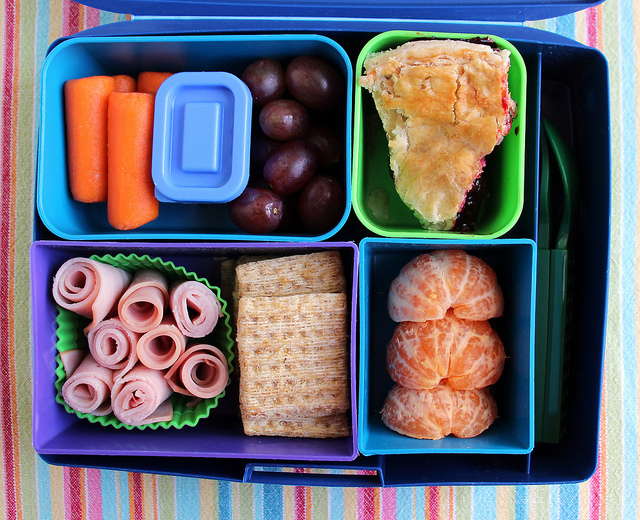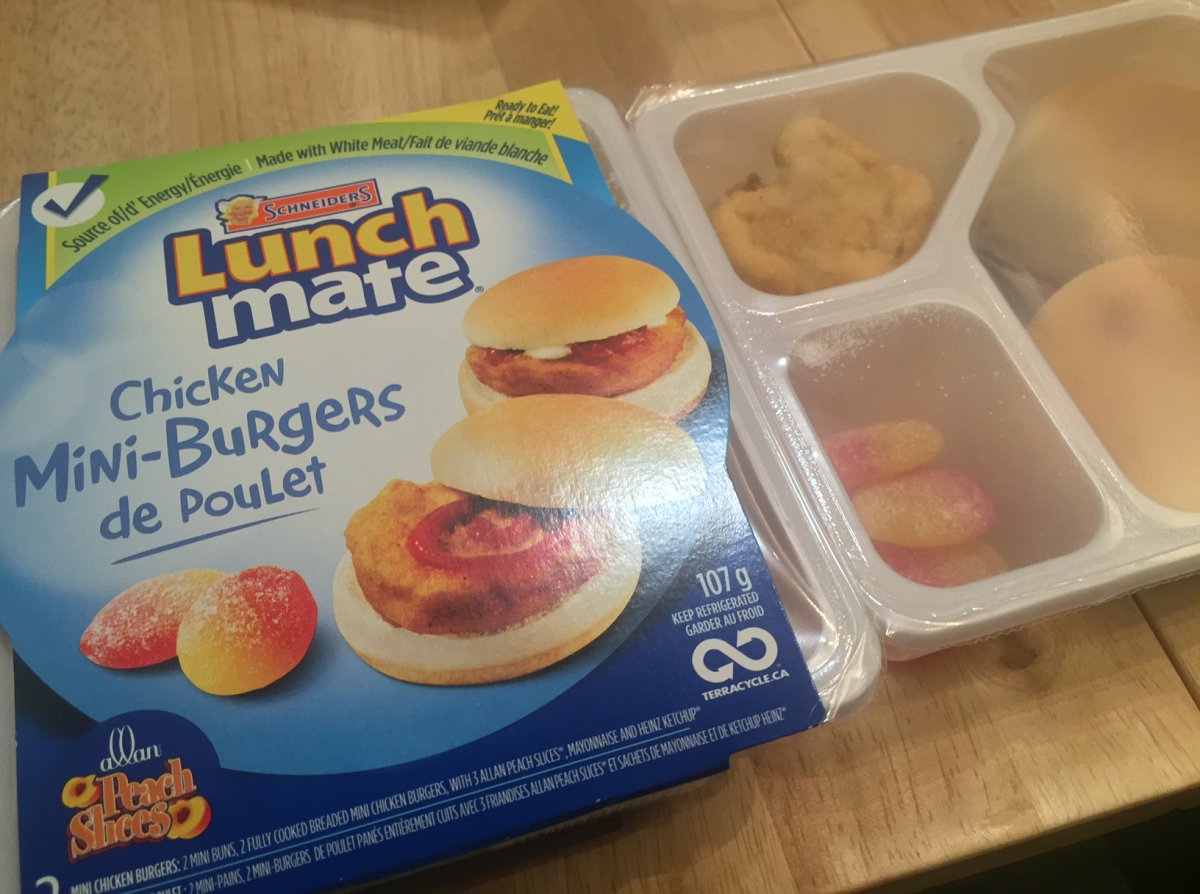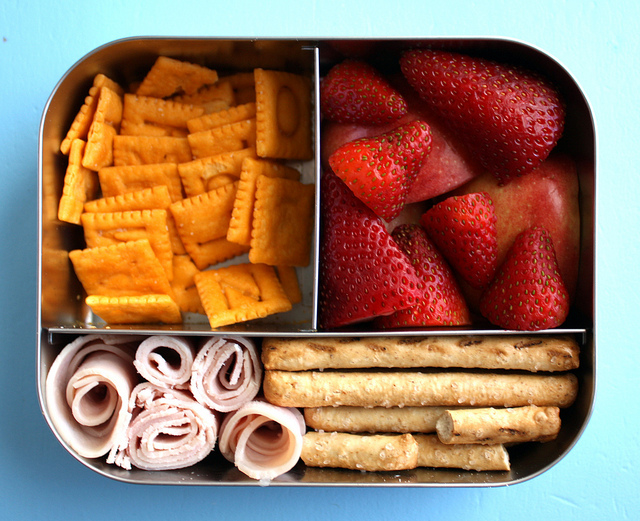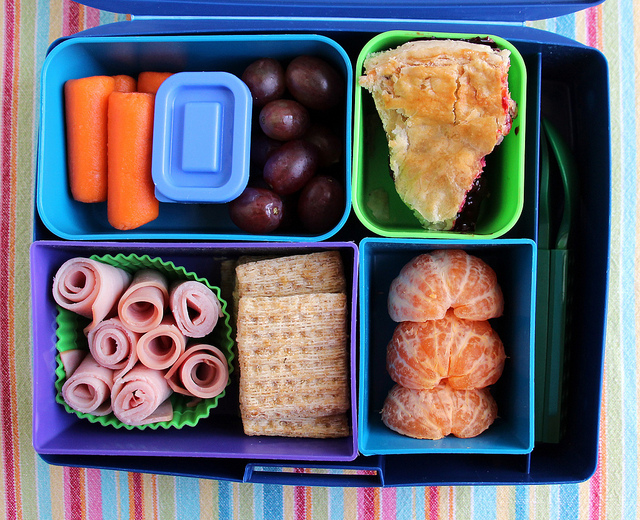A few crackers, processed meat, sliced cheese, and a candy bar. Your kids love Lunchables but at nearly $4 a pop, are you better off making a cheaper and healthier alternative at home?

Experts say they’re easy to pull together, and parents can control how much sugar, fat and salt goes into their kids’ lunchboxes.
READ MORE: 7 kid-friendly, easy-to-make, dietitian-approved breakfast recipes
When Wendy Copley’s son started preschool, she and her little one picked out a lunch box that came with compartments. With that in tow, she easily make Lunchables-like bento box meals.
The cookbook author said presentation is what’s key to Lunchables’ appeal.
“Realistically you’re packing leftovers most days. It’s how you arrange the food in the box that’s visually appealing – instead of dumping them in a plastic container, I’d arrange them more carefully so that when I sat down for lunch, it was something I would look forward to,” she explained.
READ MORE: How to have a successful litterless lunch plan this school year
Her older son, a picky eater, is more likely to eat his lunch when it’s put together like Lunchables, she said.
Watson and Copley share their tips on making your own Lunchables 2.0.
Watson said parents should zero in on the ingredients list and nutrition facts panel of these popular lunches.
“It’s a long list of processed ingredients, there’s highly processed bread product, the chicken nuggets are like what you’d get at a fast food restaurant with fillers added to it,” she told Global News.
READ MORE: 7 kid-friendly, easy-to-make, dietitian-approved lunch recipes
The pizza option has 590 milligrams of sodium – 25 per cent of your recommended daily intake, for example.
The chicken mini-burgers are housed in a white bun with no fibre.

Get weekly health news
Watson also took issue with a sugary snack in every lunch while there’s also a food group that’s obviously missing: fruits and vegetables.
Take a look at Everyday Bento author Wendy Copley’s homemade lunches for her kids (Photos courtesy Wendolonia):
How to make your own healthy, cheaper Lunchables
Both Copley and Watson rely on working with what was served the night before when they’re making their kids’ lunches.
Use whole food
Instead of white crackers, processed deli meat and cheese, Watson said she uses “higher quality” ingredients.
She’d swap out the crackers for whole grain bread, tortillas or crackers that are high in fibre. Copley uses whole grain pastas.
For protein, she uses what was made at dinnertime, such as chicken breast, roast beef, beans or chickpeas.
READ MORE: In a rush? Here’s what to eat for breakfast in the morning
“I do throw in a turkey pepperoni or something that’s a bit more processed but it’s a treat and isn’t the main protein component. That’s what makes the sodium content go up,” she warned.
Add fruit and veggies
Once you have your protein and carb components picked out, make sure you add a serving of fruit and a serving of vegetables, Copley said.
“My kids are open to most kinds of fruit but things that have a big nutritional punch are berries, peaches and mangoes or oranges and apple slices,” she advised.
READ MORE: Trying to lose weight? 10 tasty foods you’ll like and can eat guilt-free
Add raw vegetables like cucumbers, red and green bell peppers, carrots, or snap peas, too.
Invest in a good Tupperware
Equipment helps to get the job done. A lunchbox with compartments can make sure you can include dry components, such as tortilla and granola, with wet ingredients, like watermelon or yogurt.
READ MORE: 5 ways you’re sabotaging your ‘healthy’ lunchtime sandwich
If you don’t have a lunchbox with separate sections, you can rely on silicone cupcake holders that are meant for baking but can hold fruit or hummus in your Tupperware.
Get creative
The Lunchables rely on colour – red salami, yellow cheese, and white crackers, paired with a package of Fuzzy Peach candies. Do the same by working with a handful of colours.
You can also up the ante by using cookie cutters for your bread and tortillas, Copley said.
If you’re in a rush, Watson just cuts squares or triangles.
READ MORE: This food will make you feel fuller if you’re trying to lose weight
Copley also uses a paring knife to cut shapes or ice cream scooper to make melon balls. Sometimes, she’ll make mini kabobs with the vegetables and meat, too.
Making fruit and veggies bite sized goes a long way: kids are more likely to eat an apple if it’s cut into pieces or into little shapes.
Take your time
Watson and Copley swear they pull together their kids’ lunches within five to 10 minutes. It took practice though.
Now, Watson has a list of items that her kids love in their lunches. Copley said it’s all about mixing things up so they aren’t eating the same routine meal every day.
carmen.chai@globalnews.ca
Follow @Carmen_Chai


























Comments